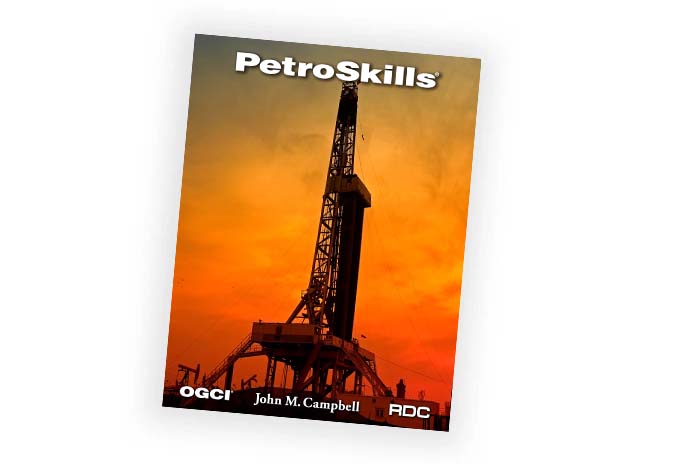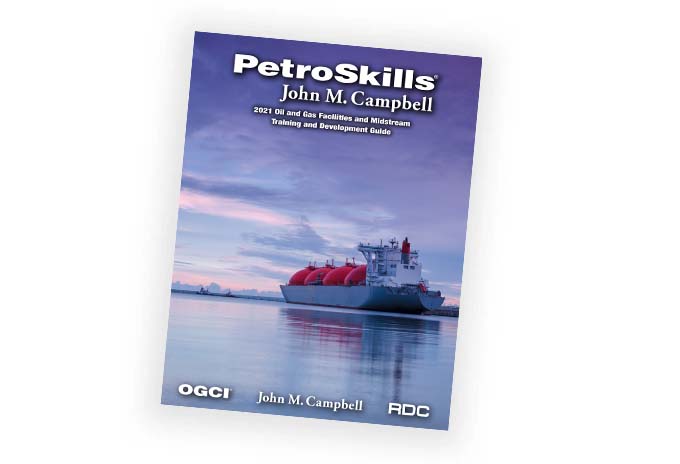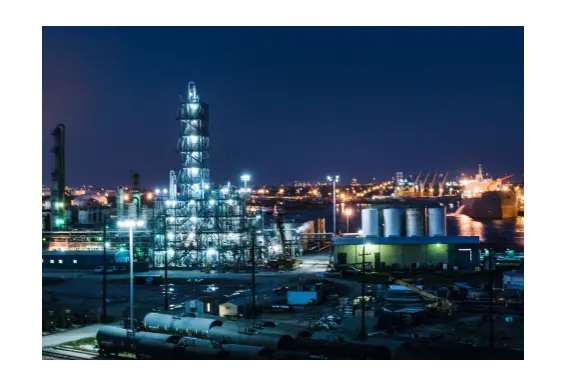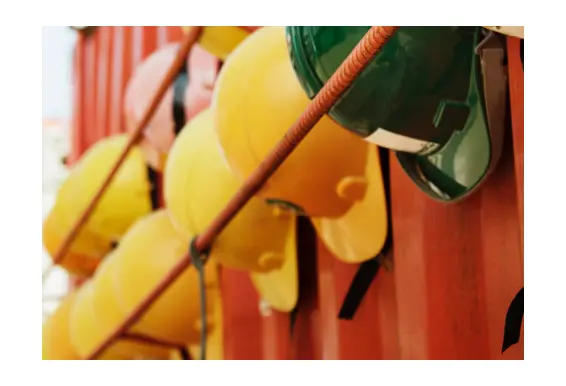Production Logging - RMP - eLearning series
About the Course
Duration: Approximately 50 hours of self-paced, online work.
Production logging refers to acquiring a suite of logging measurements in a completed well that is either on injection or production to evaluate the flow performance of the well or the reservoir. Special purpose production logging instruments can evaluate the well completion or look behind the pipe to evaluate the formation and its fluids in the near-well bore vicinity. Production logs are playing an increasing role in modern reservoir management by providing the only means of directly identifying downhole fluid movement.
This course will cover single-phase and multi-phase fluid flow in pipes, the theoretical bases of production logging techniques, production log interpretation, and operational considerations in acquiring production logs. Numerous field examples are used to illustrate the principles of production log interpretation.
View detailed schedule
Target Audience
Petroleum and drilling engineers and managers, reservoir engineers, subsurface engineers, production engineers/technologists, petrophysicists, log analysts, and anyone interested in understanding production logs and cased-hole surveys.
You Will Learn
-
The basic components of surface equipment used to log a flowing well.
-
The basic methods used to flow a well.
-
The fundamental types of completions used in typical wells and the problems associated with acquiring and interpreting production log data in these types of completions.
-
The basic information shown in a wellbore sketch and how to use this when planning production logging jobs.
-
How gamma ray and casing collar tools work and how to use them to depth align production logs to open hole logs.
-
How wireline depth measurements are made and how they compare with pipe tallies and coiled tubing depth measurements.
-
How conventional cement bond and ultrasonic cement bond logging tools work, what they measure, and how to do a qualitative interpretation of cement bond quality.
CONVENTIONAL PRODUCTION LOGGING: TEMPERATURE AND SINGLE-ELEMENT SPINNERS
-
How to identify fluid entries on a temperature log run in a flowing well and how to distinguish gas entries from liquid entries due to the Joule-Thompson cooling response
-
How formation thermal conductivity affects the shape of the geothermal gradient
-
How formation thermal diffusivity affects the rate of wellbore warm back when shutting in a flowing or injecting well
-
How to calculate relative flow rates from a flowing temperature log
-
How fluid heat capacity affects the shape of a flowing or an injecting temperature log
-
How to identify injection intervals on an injecting temperature log and how to calculate their relative injection rates using the Ramey equation
-
The different types of spinner flow meter tools and how they make their measurements
-
How to identify fluid entry/fluid injection rates on flowing/injecting spinner surveys
-
How to calculate flow rates from a multiple-pass spinner logging survey
CONVENTIONAL PRODUCTION LOGGING: TWO-PHASE FLOW
-
Identify fluid entries on pressure, differential pressure, capacitance, focused gamma density, non-focused density, and backscattered gamma logs acquired in a flowing well and how to calculate fluid holdups from these measurements.
-
Understand which measurements can be used in deviated and high angle-horizontal wells and how to interpret those measurements that can be used in these conditions.
-
Recognize which measurements are preferred for gas holdup, oil holdup, and water holdup.
-
Indentify basic flow regimes for two-phase flow and how to estimate when each might be occurring down hole.
-
Recognize how two-phase flow affects a spinner log, how to correct for it when this can be done, and when one needs measurements in addition to the conventional spinner measurements.
-
Calculate two-phase flow rates from a multiple-pass spinner logging survey using one or more types of fluid holdup measurements when fluids are well mixed.
PRODUCTION LOGGING IN HIGH ANGLE/HORIZONTAL WELLS
-
How increasing wellbore deviation increases slip velocity and heavier phase fluid holdup as well deviation increases to 90?
-
Why center-weighted production logging measurements are not suitable for calculating fluid holdup and flow rates in high-angle to horizontal wells
-
How gas holdup optical probes, water holdup resistance probes, and multiple-phase holdup capacitance probes work
-
How array mini-spinners work
-
How to calculate two-phase flow rates from a single-pass logging program using multiple holdup and spinner array measurements
ADVANCED NUCLEAR PRODUCTION LOGGING
-
How pulsed neutron capture, pulsed neutron spectroscopy, and oxygen activation tools work.
-
How to identify formation and borehole fluid contacts and distinguish between the two.
-
Which measurements are used to identify formation properties versus completion effects.
-
How to use a pulsed neutron capture tool to log down and identify hydrocarbon/water contacts in the casing and annulus with the well shut-in.
-
How to interpret data and estimate flow rates from oxygen activation measurements.
-
How to use a pulsed neutron capture tool with gadolinium tracers to estimate oil and water flow rates.
-
How to determine gas and oil holdup from pulsed neutron spectroscopy measurements.
SPECIAL PURPOSE PRODUCTION LOGGING
-
Describe how a noise tool is designed and how it operates.
-
Understand how different flow regimes affect the frequency content of a noise log and be able to identify some of these from a conventional noise log.
-
Explain how a spectral noise tool operates and describe how it is different from a conventional noise logging tool.
-
Describe how radioactive tracers are used.
-
Determine injection rates from slug tracking and velocity shot radioactive tracer surveys.
-
Understand how fiberoptic temperature measurements are made and explain the difference between these types of temperature measurements and conventional temperature logging tools.
-
Use time-lapse fiber optic temperature data with detailed production data to locate water entries in a flowing oil well.
-
Use the principles of designed a logging program to plan and design a complete cased-hole and production logging program for a complex well
Course Content
BLENDED LEARNING WORKSHOP STRUCTURE
This program is comprised of the following activities:
ILT = Virtual Instructor-led Training
OL = Online Learning Activity/Reading
EX = Online Learning Activity/Reading
Participants may select one of two session times
| Unit | Activity | Hours (Approx) | Subject |
| Unit 1 |
ILT |
1.0 | Orientation Webcast |
| OL | 4.0 | Production Logging Wellsite and Downhole Environment | |
| Unit 2 | ILT | 3.0 | Conventional Production Logging: Temperature and Single-Element Spinners Fundamentals |
| OL | 7.0 | Conventional Production Logging: Temperature and Single-Element Spinners Fundamentals | |
| ILT | 3.0 | Conventional Production Logging: Temperature and Single-Element Spinners Fundamentals | |
| Unit 3 | ILT | 3.0 | Conventional Production Logging: Two-Phase Flow Fundamentals |
| OL | 7.0 | Conventional Production Logging: Two-Phase Flow Fundamentals | |
| ILT | 3.0 | Conventional Production Logging: Two-Phase Flow Fundamentals | |
| Unit 4 | OL | 5.0 | Production Logging in High Angle/Horizontal Wells Fundamentals |
| ILT | 3.0 | Production Logging in High Angle/Horizontal Wells Fundamentals | |
| Unit 5 | ILT | 3.0 | Advanced Nuclear Production Logging Fundamentals |
| OL | 7.0 | Advanced Nuclear Production Logging Fundamentals | |
| ILT | 3.0 | Advanced Nuclear Production Logging Fundamentals | |
| Unit 6 | ILT | 3.0 | Special Purpose Production Logging Fundamentals |
| OL | 7.0 | Special Purpose Production Logging Fundamentals | |
| ILT | 3.0 | Special Purpose Production Logging Fundamentals |
Product Details
Categories:
UpstreamLevels:
IntermediateProduct Type:
CourseInstructors:
Dale FitzAdditional
Request a Public Session
If you are interested in a public session of this course, please click the button below to request it.
Request Public SessionIn-House Training
This course is also available upon request as a private, on-site seminar. Contact us for details and pricing.
Request In-House TrainingNeed Help
Contact us if you have additional questions about how to register for or attend this course.
Contact Us



